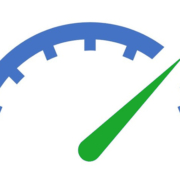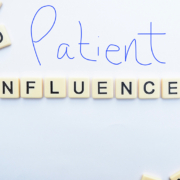A sixth-grade level
A sixth-grade level
Brands have been trying to match their messaging with patient levels of health literacy for as long as they’ve been creating messaging for patients.
By Joshua Slatko • [email protected]
Health literacy, the CDC tells us, “is the degree to which individuals have the ability to find, understand, and use information and services to inform health-related decisions and actions for themselves and others.” Given that pharma brands are in the business of communicating just that sort of information and not infrequently providing just those sorts of services, the question of the audience’s health literacy underlies virtually every DTC communication a brand might make; after all, what’s the point in investing millions in messaging if the recipients can’t or won’t understand it? So while it might not be the sexiest component of the brand equation, pharma brands and agencies have been trying to measure and account for levels of patient health literacy for as long as they’ve been developing patient-facing content.
The story of pharma brands accounting for the health literacy levels of patient audiences began in the first days of DTC with a tool that parents of young children will find familiar: the Fry readability formula.
“I was first introduced to the idea of health literacy 26 years ago when working with Pfizer brands,” says Mindy Telmer, executive creative director, Greater Than One. “Pfizer was one of the first companies to focus on the reading level of their consumer messaging, in the very early days of DTC advertising and communications. An edict came down from Pfizer leadership saying that agencies had to write on an eighth grade level, and they used the Fry test to measure readability. Over the years, that has not changed – we are still aiming to write at a sixth to eighth grade level.”
Dina Peck, the chief creative officer of Patients & Purpose, recalls a similar experience. “20-plus years ago, Pfizer was really at the forefront of developing audience-appropriate content for patients,” Peck told Med Ad News. “If you were working with Pfizer, you were ‘Frying’ any documents that came through. Anyone who cared about the audience’s literacy level was focusing on language, focusing on whether the patients could actually understand the words we were putting in front of them.”
Fast-forward 26 years, though, and patients are consuming information in profoundly different ways. “We’re in a different place, right?” Peck says. “People are staring at screens, and we have a vastly different and more nuanced understanding of how they interpret what we put in front of them. It’s not just about the language any more – it’s about usability, it’s about accessibility, it’s about relevance; is this relevant to me as a patient, as a human with my own cultural codes? So many more variables are in play now.”
With this in mind, over the past few years Peck’s agency has developed its own trademarked approach to health literacy, called Healthy Communications, which attempts to encompass the entire patient (and caregiver, and HCP) experience in accessing, using, and remembering health information.
“FDA recently defined health literacy as the match between the information we provide and the audience’s ability to access it and use it for their health,” says Susan Andreas, Ph.D., director of health literacy for Patients & Purpose. “That mirrors our own approach.”
P&P’s Healthy Communications is founded on a few basic principles. First, make the information accessible. “In the world of health literacy, that really means, is it discoverable? Is it on the right platform? Is it where patients will see it? Can patients actually find the information?” Andreas says. “Then, if they can find it, can they use it? Does the information take into account that specific patient audience’s physical or cognitive needs and issues?”
Taking those needs and issues into account requires a fair amount of drill-down. “Every patient group has their own health literacy needs, right?” Andreas explains. “They’re all patients. They all have a condition, whether everything from – if they have arthritis, is the paper stock appropriate and easy for them to hold? Will the brochure lay on its own on the table versus them having to hold it? Are the buttons big enough for them to manipulate if they have dexterity issues, for example?”
Assuming the information can be found and used, the next question is whether it can be understood. And while that is at least in part a question of words and language – brands and agencies are still using the Fry readability formula just like 26 years ago – it is also a question of visuals, layout, and ease of use.
“Are we making sure that someone could easily look down at the page and immediately understand what the message is that we’re trying to give them,” Andreas says. “So, not just is it easy to understand, but does it look easy to understand, right? If you’ve got an email with a giant block of copy, and every single word was really short, and every single sentence was really short, how likely would a patient be to engage with that content? It doesn’t look approachable, even if the individual words are easy to understand. Something might be easy to understand, but does it look like it’s something you would want to engage with?”
After that, the next question is, will it resonate? “The language we use has to be the language that the patients themselves use,” Andreas explains. “So we do workshops with patients. We talk with patients, we talk with caregivers, we talk with doctors, to find out what words patients are actually using to describe their condition, the way they feel, any side effects. We don’t want to be telling patients how to describe their condition; we want to use their language.”
In a time and place where patients have nearly unlimited options when seeking out information about their conditions – online communities, social media, even TikTok – the idea of making sure a brand’s voice resonates becomes even more critical. “Patients look to online communities and social media because the voices they find there have lived the same experience they are living,” says Matthew Sherwood, senior VP, group creative director, Patients & Purpose. “For a brand to be a part of that conversation, it’s imperative and critical to be able to speak the same language as their patients. Otherwise, these patients will just go elsewhere. That’s why it’s so important to get those cultural cues and that deeper language understanding, so that you can create communications that patients understand and want to engage with.”
For those that might fear the possibility of “dumbing down” their communications too much, well, worry not. Patients neither need nor expect brand messages about health to be at their highest possible level of comprehension; what they do need is to be able to wade through the intense information fire hose that comes along with a disease diagnosis. Having the disease is stressful enough; learning what you have to do to manage it shouldn’t have to be more so.
“If you don’t know much about health literacy, and you think of it as speaking at a sixth-grade level, you might think, ‘Aren’t our patients more than sixth grade educated?’” Andreas says. “Of course they are. It really has nothing to do with a patient’s education level or how smart they are.”
Take, for example, a cancer patient. “If you’ve ever received a scary diagnosis like cancer, you know that everything that comes after is like the teacher in Charlie Brown,” Andreas says. “In addition to dealing with a completely overwhelming diagnosis, a completely overwhelming treatment plan, and all the things that they have to go through, they’re dealing with financial information that they don’t understand, insurance information they don’t understand. Everything is in 4,000 different places. They want more than anything for everything to just be in one spot for them, to have an advocate, for something to be simple and easy to understand. I have a Ph.D. in English and I still struggle with health information – and I’m not dealing with a life-changing disease diagnosis.”
Another angle to the health literacy question is the messaging that brands provide to HCPs so that they can explain diseases and treatments to patients. Anyone who’s ever seen a doctor has probably experienced the tendency of doctors to speak over the head of the rest of us civilians – but brands have the opportunity to prime the pump, as it were, by providing HCPs with patient-appropriate messaging to use.
“I do think it’s a brand responsibility to educate HCPs on how to communicate effectively with patients,” Telmer says. “Many brands are doing great work with discussion guides, visual aids for HCPs, those sorts of tools.”
And let’s not forget the nurses; Telmer calls them the “champion profession for health literacy.”
“I would love to see more focus on the brands talking to nurses,” she says. “There’s a little bit of thinking that, well, the nurses aren’t prescribing so we’re not going to invest in messaging they can share with patients. That’s where I see some brands fall short. Nurses are a wonderful avenue for health literacy; in fact nurses are often interacting with the patient more than doctors, are answering more questions, and explaining the therapeutic experience in more detail. So that’s one avenue where I wish brands were doing more, supporting these non-
prescribing groups, and providing those same discussion guides and visual aids that go to the doctors.”
 |
Josh Slatko is contributing editor of Med Ad News and PharmaLive.com. |











